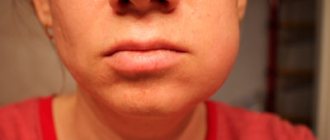Cytological examination (cytology) is the main method of screening for assessing the condition of the cervical epithelium. The main task of cytological screening is to search for altered epithelial cells (atypical, having a structure different from normal epithelial cells).
The term “atypical cells” includes both cells with signs of dysplasia - mild, moderate or severe (precancerous cells), and cancer cells themselves. The difference between them is the degree of severity of changes in the structure of cells.
Cytological screening must be performed by all women (excluding virgins and patients who have undergone hysterectomy), starting at 21 years of age and ending at 69 years of age (if there are no changes in the studies), the frequency of testing is once a year, according to order 572n ( November 1, 2012), however, it is permissible to take an analysis once every three years (order of the Ministry of Health of the Russian Federation No. 36 an, dated February 3, 2015).
Currently, there are two alternative methods for fixing and studying biological material, the key difference between which for patients is their effectiveness.
Pap test and liquid cytology
The material is collected in the same way (standardized sampling): with a combined brush or two cytological brushes (Figure 1), since the epithelium must be taken from both the outer vaginal surface of the cervix (ectocervix) and the inner one - from the cervical canal (endocervix). The need to collect cellular material from the cervical canal is due to the fact that the junction zone of epithelium (cylindrical and stratified squamous non-keratinizing - the place where “bad” processes most often begin (90-96% of cases)) with age moves closer to the center and inside the cervical canal.
Figure 1 – Cytological brushes (on the left – combined, on the right – 2 cytological brushes)
It is recommended to collect cytological material before bimanual (two-handed) vaginal examination, colposcopy and ultrasound examination. You should not take smears if you have vaginitis (inflammatory process in the vagina), during its treatment, or during menstruation. Also, sexual abstinence is necessary for two days.
Technique for collecting biomaterial:
- the patient lies on a gynecological chair;
- a speculum is inserted into the vagina, visualizing the cervix;
- the area of the external pharynx is carefully blotted with a cotton swab to remove mucus;
- when using two cytobrushes: the first brush is placed on the vaginal surface of the cervix and in the exocervix and rotated 360⁰ clockwise 5 times, and the second brush is placed in the cervical canal at a depth of about 2 cm and rotated at least 3 times counterclockwise;
- when using a combined cytobrush: the central part of the brush, which has short bristles arranged horizontally, is inserted into the cervical canal, with long bristles located on the vaginal part of the cervix, the brush is turned clockwise 3 to 5 times.
Differences between Pap test and liquid cytology
- When performing a traditional cytological examination (PAP test), the resulting material is distributed on a pre-defatted glass slide in a uniform thin layer, which is not always possible due to the presence of the human factor (the microslide is prepared directly by a specialist), as well as in the presence of an inflammatory process or bleeding (epithelial cells can often be obscured by accumulations of white blood cells and red blood cells and are not visible under a microscope). In view of the above, 10% of smears will be uninformative, which will require re-analysis. In addition, most of the collected cells remain on the cytobrushes; for additional studies (if a questionable result is obtained), repeated sampling will be necessary.
- The sensitivity of the Pap test (the probability of reliably detecting “unhealthy” cells) is 55-74%, and the specificity (the guarantee that “unhealthy” cells will be detected if they are present in the smear) is 63.2 – 99.4%. The liquid cytology method has a number of advantages over traditional research.
- When performing liquid oncocytology, material is always collected using a combined cytological brush; the collected material, together with a removable brush, is placed in a special container (vial) filled with a stabilizing solution, which prevents the loss of biomaterial and ensures its long-term storage and additional studies if necessary.
- The information content of liquid cytology is higher, which is ensured by an automatic system for preparing and staining microslides, which makes it possible to arrange epithelial cells in one layer, separating them from other cellular elements. Drug evaluation is also performed automatically using the CytoScreen system.
- The number of inadequate smears when using the liquid technique is 10 times lower than when using the traditional one and does not exceed 1%.
- The biological material remaining as a result of liquid oncocytology can subsequently be used for additional studies, for example, immunocytochemical determination of the p16(INK4α) protein or determination of highly oncogenic types of human papillomaviruses.
In 99% of cases, the result obtained using liquid cytology coincides with the results of histological examination.
The only drawback of the method is that it is not included in the compulsory health insurance system, i.e. the analysis is paid.
How does a Pap smear differ from a regular smear for oncocytology?
Unlike oncocytological smears, which are done in antenatal clinics, when performing a Papanicolaou smear, a specially selected composition of fixatives and dyes is used, which makes it possible to identify early precancerous diseases of the cervix with the greatest degree of reliability. This technique is standard for developed countries in Europe and America, as it gives the least number of false negative results. When taking smears using the usual method, fixatives are not used, and the set of dyes is extremely simplified.
When taking smears, the Center for Immunology and Reproduction uses glasses and dye sets specially purchased in the USA. After the study, all glasses are stored in perpetual storage in the laboratory, which allows comparison of smears from the same woman over a number of years.
Cervical cytology results
According to the current clinical guidelines of 2021, interpretation of test results should be carried out according to the Bethesda system, although you can find a cytological conclusion using the Papanicolaou, WHO and CIN (histological classification) systems. A comparison of the systems is shown in Table 1.
Table 1 - Correlation of classifications of precancerous lesions of the cervix
Conditions defined according to the Bethesda terminological system will have clinical significance, therefore, for example, moderate dysplasia, severe dysplasia and carcinoma in situ = CIN II and CIN III = HSIL, and the management tactics for all of these conditions of stratified squamous epithelium will be the same (HSIL category).
Decoding the results
So, you are holding an oncocytological report in your hands. Decoding the result, as well as choosing management tactics based on it (taking into account age and lifestyle characteristics), should be carried out not by you, but by your attending physician! It is he who directs you to the necessary additional studies and chooses treatment tactics, if necessary. But who among us doesn’t look on the Internet to see what the abbreviations in the cytological report actually mean and what to prepare for? I think any person who is worried about their health.
Below we will consider the decoding of the abbreviations of the Bethesda terminological system with approximate (according to the current clinical recommendations (2017) management tactics.
If squamous epithelial cells are changed:
NILM
NILM (negative for intraepithelial lesion or malignancy) - a negative result for dysplasia or cancer - is the norm, completely excluding the possibility of the presence of atypical (altered, with signs of possible malignancy) cells. If you see the acronym NILM in your report, congratulations! There is a division of a smear negative for dysplasia or cancer into NILM 1 and NILM 2, meaning the first is the absolute norm, and the second is concomitant reactive (inflammatory) changes in the smear, which can be caused, for example, by bacterial vaginosis. A smear on the flora or PCR diagnostics will help to clarify the reason for the abbreviation NILM 2 in the cytological report. There is nothing to worry about regarding cytological examination. Routine (ordinary) screening is indicated in accordance with age: at least once every three years up to 29 years; at least once every 5 years in combination with HPV testing over the age of 29 years; and at least once every 5 years in combination with HPV testing over the age of 29 years.
ASC-US
ASC-US (atypical squamous cells of undetermined significance, squamous epithelial cells with atypia of unclear significance ) is the most common type of abnormality found in cytological reports. The bottom line is that cells have been found that differ in their structure from normal ones, but it is impossible to say that the differences are caused precisely by dysplasia, and not by other reasons - reactive conditions (inflammatory process, hypoestrogenism). According to statistics, the histological picture of CIN III (severe dysplasia) with this cytological conclusion occurs no more often than in 2% of cases. Therefore, there is no need to worry. But it is worth carrying out an HPV test (it should be noted that ASC-US is not accompanied by HPV infection in only one third of cases), and if it is negative, you can move on with your life, having passed both tests (oncocytology and HPV testing) after 1 - 3 years. If HPV is detected, the doctor will prescribe a colposcopy, based on the results of which it is possible to take a biopsy (a section of cervical tissue). If there are no colposcopic changes, a year later it will be necessary to repeat the cytological examination and HPV testing. Another tactic is also possible: repeat cytological examination after a year. If the “ASC-US” conclusion is received again - colposcopy and HPV testing, and if “NILM” - no additional studies are required and you can live peacefully until the next screening.
ASC-H
ASC-H (atypical squamous cells, cannot exclude HSIL, squamous epithelial cells with atypia of unclear significance do not exclude HSIL) - altered cells are also found here, but the probable cause of their appearance is dysplasia. The doctor will prescribe you a colposcopy with a biopsy and HPV testing; further tactics will be determined depending on the results obtained.
LSIL
LSIL (low grade squamous intraepithelial lesion, low grade squamous intraepithelial lesion ) – atypical cells corresponding to mild dysplastic changes were found in the studied material. The doctor will refer you for HPV testing and, if the test is positive, for a colposcopic examination, where a biopsy may be performed. If the HPV test is negative, cytological examination and HPV testing will need to be done after a year. Read more about HPV in the article HPV (human papillomavirus) discovered!
HSIL
HSIL (high grade squamous intraepithelial lesion, high grade squamous intraepithelial lesion ) - atypical cells corresponding to severe dysplastic changes were found in the smear. The doctor will refer you for a colposcopic examination and excision (excision of an area of altered tissue with a loop) / conization (removal of a cone-shaped area of the cervix including the vaginal surface and the lower part of the cervical canal) followed by a histological examination of the resulting biomaterial. to the HSIL category according to the Bethesda classification (see Table 1, WHO descriptive system).
CIS
CIS (carcinoma in situ, carcinoma “in situ” - intraepithelial cancer ) - malignantly changed squamous epithelial cells are determined in the preparation. This abbreviation assumes that the pathological process does not extend beyond the epithelium, the basement membrane is not damaged, and the underlying stroma is not involved, which distinguishes “in situ” carcinoma from invasive (penetrating into the underlying tissue) cancer. (Read more in the article Cervical Cancer)
However, a cytological study does not provide an idea of the spatial location of cells with signs of atypia; only a histological study can establish the depth of penetration of the pathological process into the tissue.
If columnar epithelial cells are changed:
A.G.C.
AGC (atypical glandular cells, atypical glandular epithelial cells) - the presence of altered columnar epithelial cells in the collected material, which in most cases means the location of the pathological process inside the cervical canal.
AIS
AIS (adenocarcinoma in situ, endocervical adenocarcinoma “in situ” (from Latin - “in place”)) is the presence of malignantly changed columnar epithelial cells. As in the case of CIS, it is assumed that the pathological process does not extend beyond the epithelium and the basement membrane is not damaged. But we remember that oncocytological examination cannot determine the depth of tissue damage. It only assesses the level of malignant changes in cells, according to which it determines the degree of dysplasia or identifies atypical cells as malignant. In addition to HPV testing and colposcopy, the attending physician will prescribe curettage of the cervical canal, and if you are over 35 years old, then an aspiration biopsy of the endometrium to obtain a histological conclusion about the depth of the lesion and to exclude a pathological process in the uterine cavity.
The above management tactics, depending on the results of cytological studies, are indicative. Management tactics in each specific case are determined by the attending physician, taking into account the individual characteristics of the patient (age, presence or absence of children, concomitant diseases, fact of HPV infection, personal qualities).
Dear girls, women, I urge you to regularly conduct cytological examinations and wish to receive exclusively “NILM” in conclusion.
What are the causes of abnormal Pap smear results?
When there is an infection such as thrush, trichomonas, chlamydia, or gonococcus, the cells in the cervix become inflamed and appear abnormal. Once the infection is treated, the Pap smear usually returns to normal.
A common cause of abnormal Pap smears is human papillomavirus. The virus may be present in the cervix and may also cause genital warts in the external genital area. There are many types of human papillomavirus, some of which are associated with an increased risk of cervical cancer. Therefore, women who have human papillomavirus may have an increased risk of developing cervical cancer.
Cancer cells are the most modified abnormal cells found in a Pap smear. In preinvasive cancer, only the superficial cells are affected. Invasive cervical cancer means that the disease has spread beyond the surface layer of cells.
What is done if the Pap smear is abnormal?
The plan of action depends on the degree of cellular changes described by the cytologist. If the changes are associated with inflammation, the smear is usually repeated several months later. If necessary, appropriate treatment can be prescribed. Smears that show low-grade abnormalities may be repeated after a few months, or your doctor may order a colposcopy. High degree deviations are always an indication for colposcopy. Patients with abnormal smears are usually advised to use condoms and spermicidal gels or abstain from sexual intercourse until the examination is completed.
What to do if the biopsy indicates abnormalities?
Medical recommendations will depend on the histological report.
At the Center for Immunology and Reproduction, the doctor may prescribe periodic monitoring, frequent Pap smears, colposcopy or laser therapy. In this case, the changed cells are removed using a laser beam. The Center recommends that every woman undergo an annual medical examination.
More details about the program You can take this and other tests in the CIR laboratory Find out the cost of the analysis










